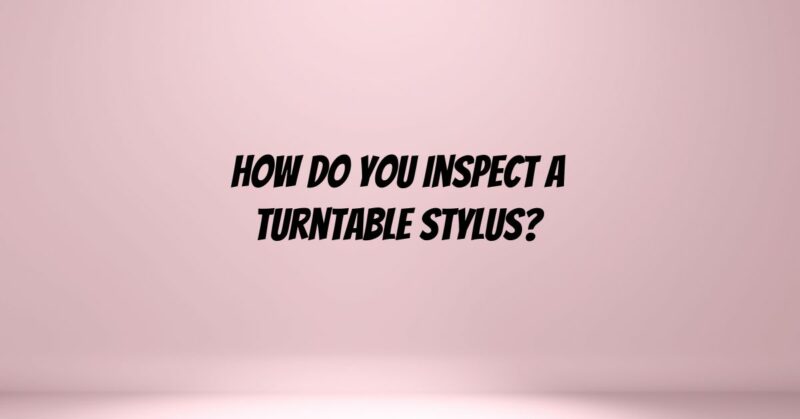The turntable stylus, also known as the record needle, is a critical component of your vinyl playback system. It’s responsible for making direct contact with the grooves of your vinyl records, translating the analog audio information into the sound you hear. To ensure optimal playback quality and the longevity of both your stylus and records, regular inspection is essential. In this article, we’ll explore how to inspect a turntable stylus correctly, identifying signs of wear or damage, and maintaining its performance.
Tools Needed for Inspection
Before you begin inspecting your turntable stylus, gather the following tools:
- A magnifying glass or jeweler’s loupe with 10x or higher magnification.
- A good light source to illuminate the stylus properly.
- Steady hands and a stable surface to work on.
Steps to Inspect a Turntable Stylus
Follow these steps to conduct a thorough inspection of your turntable stylus:
- Turn Off and Secure the Turntable:
- Ensure that your turntable is turned off and unplugged to prevent any accidental activation during the inspection.
- Lock the tonearm in place to keep it from moving during the examination.
- Provide Adequate Lighting:
- Proper lighting is crucial for a detailed inspection. Position the light source so that it shines directly on the stylus.
- Examine the Stylus Under Magnification:
- Gently lower the magnifying glass or jeweler’s loupe to eye level, focusing on the stylus tip.
- Use your free hand to hold the stylus guard or tonearm steady if necessary.
- Inspect for Signs of Wear or Damage:
- Look for the following indications of stylus wear or damage:
- Flattened Tip: Check for a flattened or worn-down stylus tip. It should be smooth and evenly shaped.
- Chips or Nicks: Look for any visible chips, nicks, or irregularities on the stylus tip. Even minor damage can affect playback quality.
- Debris or Residue: Ensure that there is no debris, dust, or residue adhering to the stylus, as this can interfere with playback.
- Look for the following indications of stylus wear or damage:
- Check Stylus Alignment:
- Assess the alignment of the stylus in relation to the cartridge. It should be perpendicular to the record surface for accurate tracking.
- Verify that the stylus is not bent or misaligned, as this can lead to tracking errors.
- Inspect the Cantilever:
- The cantilever is the slender tube that supports the stylus. Examine it for any signs of bending, misalignment, or damage.
- Record Your Findings:
- If you notice any issues or irregularities during the inspection, make a note of them for reference.
- Reassemble and Secure:
- After completing the inspection, carefully reassemble any components you may have removed, such as the stylus guard or tonearm lock.
- Ensure that all parts are secure before reactivating the turntable.
- Listen for Playback Issues:
- After inspection, listen to a record to see if you notice any audible problems, such as distortion or skipping, that may indicate stylus issues.
When to Seek Professional Help
While visual inspection is an essential part of stylus maintenance, it may not reveal all potential problems. If you encounter persistent playback issues or suspect stylus problems despite a clean bill of health visually, it’s advisable to seek professional assistance from a turntable technician or audio specialist. They can perform more advanced tests and assessments to diagnose and address any underlying issues with your stylus or turntable setup.
Conclusion
Regularly inspecting your turntable stylus is crucial for maintaining sound quality, protecting your vinyl records, and ensuring an extended stylus lifespan. By following the steps outlined in this article and conducting thorough examinations, you can identify signs of wear or damage early, allowing you to address any issues promptly and continue enjoying the rich and authentic sound of vinyl records.


